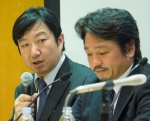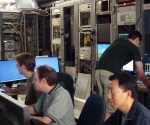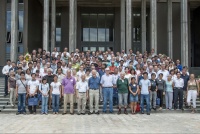In the News
-
from Tokyo Shimbun
12 August 2013
来場者からは、ILCに関して「五輪のように国内に誘致するためにはどうすればいいか」との質問が出た。 村山さんは「国民から『(ILCを使った実験は)おもしろそうだからやってみよう』という声が上がらなければ、政治家は(誘致に向けて)動かない。声が上がることが大事なポイントと思う」と答えた。(Responding to the question from the lecture attendee, how can Japan invite the ILC like Olympic game, Murayama said “If there is no back-up from the public, politicians would never take action. Important thing is that many people think that the ILC is very interesting .” )
-
from Kahoku Shinpo
5 September 2013
東北・北海道商工会議所連絡会議が4日、秋田市のホテルであり、岩手県南部と宮城県北部にまたがる北上山地への誘致を目指す超大型加速器「国際リニアコライダー(ILC)」の建設実現などを国に求める特別決議を採択した。A meeting of Chamber of Commerce in Tohoku and Hokkaido area was held on 4 September, and they adopted a special resolution to appeal the realiaztion of the ILC to the government)
-
from Physics World
3 September 2013
As well as choosing the ILC over CLIC, the AsiaHEP/ACFA statement also backs plans announced on 23 August by Japanese particle physicists to build the ILC in the Tōhoku region about 400 km north of Tokyo. The 50 km route under the Kitakami mountains was selected over an alternate location at Sefuri on the island of Kyushu.
-
from CERN Courier
September 2013
…the International Linear Collider and Compact Linear Collider (…) will demand extremely high-performance calorimetry, which is best achieved using a finely segmented system that reconstructs events using the so-called particle-flow approach to allow the precise reconstruction of jet energies. The technique works best with an optimal combination of tracking and calorimeter information and has already been applied successfully in the CMS experiment.
-
from The Japan Times
30 August 2013
The ILC is an enormous international project that will require time-consuming negotiations so construction won’t begin for five years. Its construction will involve the participation of some 1,000 engineers and researchers from both Japan and abroad, and take 10 years. If research and improvement are taken into account, 40 years will be needed, and there is also a plan to extend the ILC tunnel to 50 km.
Copyright © 2026 ILC International Development Team




